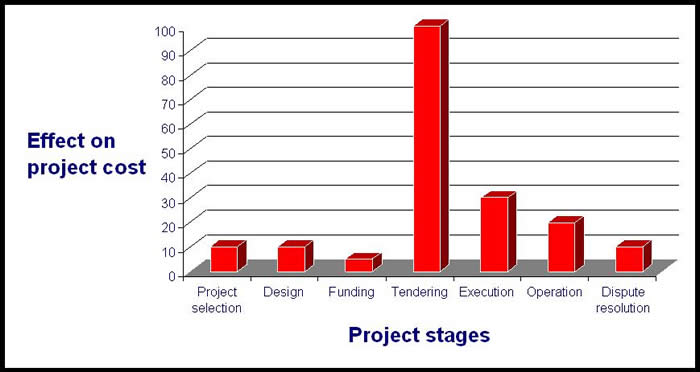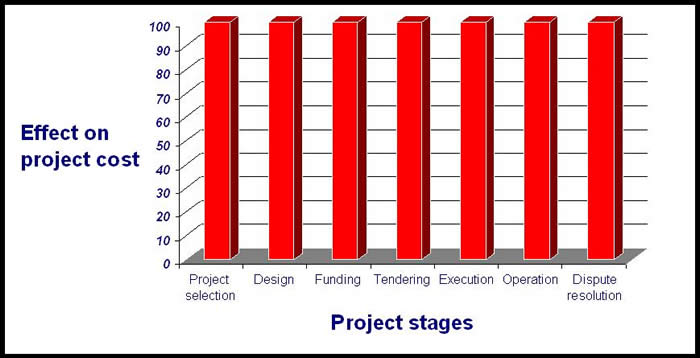The wide nature of the corruption risk
The risks of corruption on a project are widespread and complex.
-
Many types of corruption: As described in the previous pages, there are many different types of corruption which can occur on a project. These include: bribery, facilitation payments, extortion, fraud, collusion, abuse of power, embezzlement, and money-laundering.
-
Many potentially corrupt individuals and organisations: This corrupt activity may be perpetrated by anyone connected with the project including any officer or employee of the project owner, the project funder, the project designer, tenderers, consultants, construction companies, sub-contractors, suppliers, agents, joint venture or consortium partners, and government officials responsible for granting approvals and permits.
-
Throughout the project cycle: There is a mistaken assumption that the greatest risk of corruption in the project cycle is in the tendering phase. In fact, an equal risk exists across all phases. Significant loss may be caused by corruption in any phase. This is demonstrated by the two charts below:
The assumed risk of corruption:

The real risk of corruption:

Consequently, you should assume that corruption can take place throughout the project cycle.
Examples of corruption in the project cycle:
- Project selection: Unnecessary or unviable projects may be selected for corrupt reasons.
- Planning: Planning permission may be granted in exchange for a bribe.
- Design: Designs may be slanted so as to favour certain contractors.
- Funding: Bribes may be paid to obtain financing, or financing may be provided at unduly high interest rates.
- Pre-qualification: Bribes may be paid by a bidding contractor to ensure that key competitors of the contractor are eliminated from the short-list on artificial grounds.
- Tendering:
-
Bribes may be offered or extorted to win or award contracts.
-
Bidders may collude to agree which of them will win the contract.
-
- Execution:
-
Defective works may be carried out and concealed.
-
Fraudulently inflated claims may be submitted.
-
Bribes may be paid to have false variations and inflated claims approved.
-
Bribes may be extorted to have legitimate claims and payments approved.
-
-
Operation and Maintenance: There may be corruption in the tendering and execution of operation and maintenance contracts.
-
Dispute resolution: Witnesses, experts, arbitrators or judges may be bribed in order to give false evidence in a dispute proceeding, or to give a favourable opinion or verdict.
